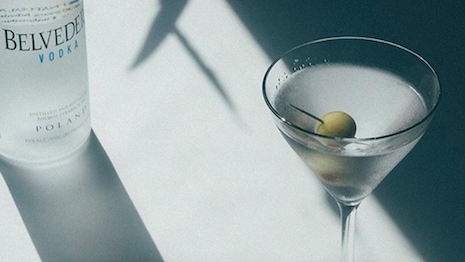- About
- Subscribe Now
- New York,
November 9, 2018

 Harrods' Fine Wine and Spirits room. Image credit: Harrods.
Harrods' Fine Wine and Spirits room. Image credit: Harrods.
Still wines are proving to be the most frequently purchased form of luxury alcohol across all age groups worldwide.
A survey from Altiant shows that while 30 percent of affluent consumers worldwide will buy a bottle of sparking wine such as Champagne once a week, still wine beats out this category with 40 percent. Spirits, not surprisingly, are bought less frequently due to consumers drinking one bottle over a longer period of time, but 27 percent of the survey still claimed to purchase one bottle a week.
"We’ve noted a positive trend among our affluent & high net worth base, purchase intent is high with 32 percent planning to buy more alcohol within the next year compared to last year, especially the 18 to 39s significantly more likely than over-40s to do so," said Chris Wisson, research director at Altiant. "The majority of respondents plan to buy about the same amount; rising to 70 percent among over-40s. Only 7 percent expect to buy fewer alcoholic drinks within the next year."
Alcohol consumption trends
Asia has proven tobe the costliest in terms of alcohol consumption, with an average of $175 spent on a 750 ml bottle of alcohol.
United States follows with $119.05 per bottle and Europe at 73.40 euros, or $84 at current exchange.
The survey showed that women are more likely to stick to only one drink, while men are more likely to limit it to a single drink once they are over the age of 40. About 20 percent of women will stick to one drink and only 9 percent of men, as well as 21 percent of men over the age of 40 doing so and only 10 percent for those aged less than 40.
 Sonoma-Cutrer Vineyards immerses its customers and visitors into the wine-making and savoring experience. Image credit: Sonoma-Cutrer
Sonoma-Cutrer Vineyards immerses its customers and visitors into the wine-making and savoring experience. Image credit: Sonoma-Cutrer
Men are much more likely to consume more than five drinks per occasion than women, with 9 percent of men and 3 percent of women saying they do. Only 6 percent of affluents total say they drink more than five drinks per occasion.
Three percent claimed to abstain completely from alcohol consumption, while 74 percent say they only have one to three drinks per occasions.
Champagne holds its status as the drink for a special occasion, with almost half of respondents saying they will drink the wine for occasions such as weddings, milestones, birthdays and seasonal holidays.
Sixty-seven percent of those surveyed agree that Champagne is the most luxurious type of sparkling wine. For those over 40, 72 percent agree and for those younger than 72, 63 percent agree.
Prosecco is the drink of choice for these occasions for 10 to 15 percent of wealthy consumers.
Spirits are the most popular for birthdays and personal milestones as well as business-related occasions, at 20 percent and 19 percent, respectively.
 Vodka is not traditionally competitive with other spirits on a luxury level, but that may change. Image credit: Belvedere
Vodka is not traditionally competitive with other spirits on a luxury level, but that may change. Image credit: Belvedere
While the respondents of the survey are affluent, 32 percent of respondents only have a few wines in their possession and 6 percent have none at all.
Thirty-five percent of affluents have more than 20 bottles of wine in their personal collection. Consumers who have six to 20 bottles kept in an at-home wine cellar or an off-site storage facility make up 27 percent of the survey.
Additional insight
Champagne is being threatened by the growth in popularity from rival sparkling wines, with prosecco leading the charge.
By 2021, sparkling wines, considered to be any "bubbly" not produced in the Champagne region of France, are expected to reach 219 million cases produced per year. For example, a report from just-drinks and The IWSR found that proscceo sparkling wine has become so popular with consumers that it has dethroned cava wines and is second in popularity when compared to Champagne (see story).
While online ordering for alcohol seemed slow to take off, China is paving the way for this form of ecommerce to become popular with 15 percent growth each year.
According to the IWSR "Ecommerce Study: A strategic roadmap for alcoholic beverages," China’s ecommerce market for alcoholic beverages is currently at $6.1 billion, four times higher than the United States. Popular Chinese e-retailers Tmall and JD.com together triple the number of alcoholic ecommerce sales from the U.S. alone (see story).
"Chateau Lafite Rothschild enjoys a particularly strong overall image as a luxury brand with a very strong performance in Asia," Mr. Wisson said. "The brand evidently carries a high degree of gravitas – cited by a third as the first brand which comes to mind.
"There has been a lot of press around counterfeit imported wine in china in the past year with Chateau Lafite Label being considered as the most counterfeited wine in China," he said. "There may be a correlation."
Share your thoughts. Click here